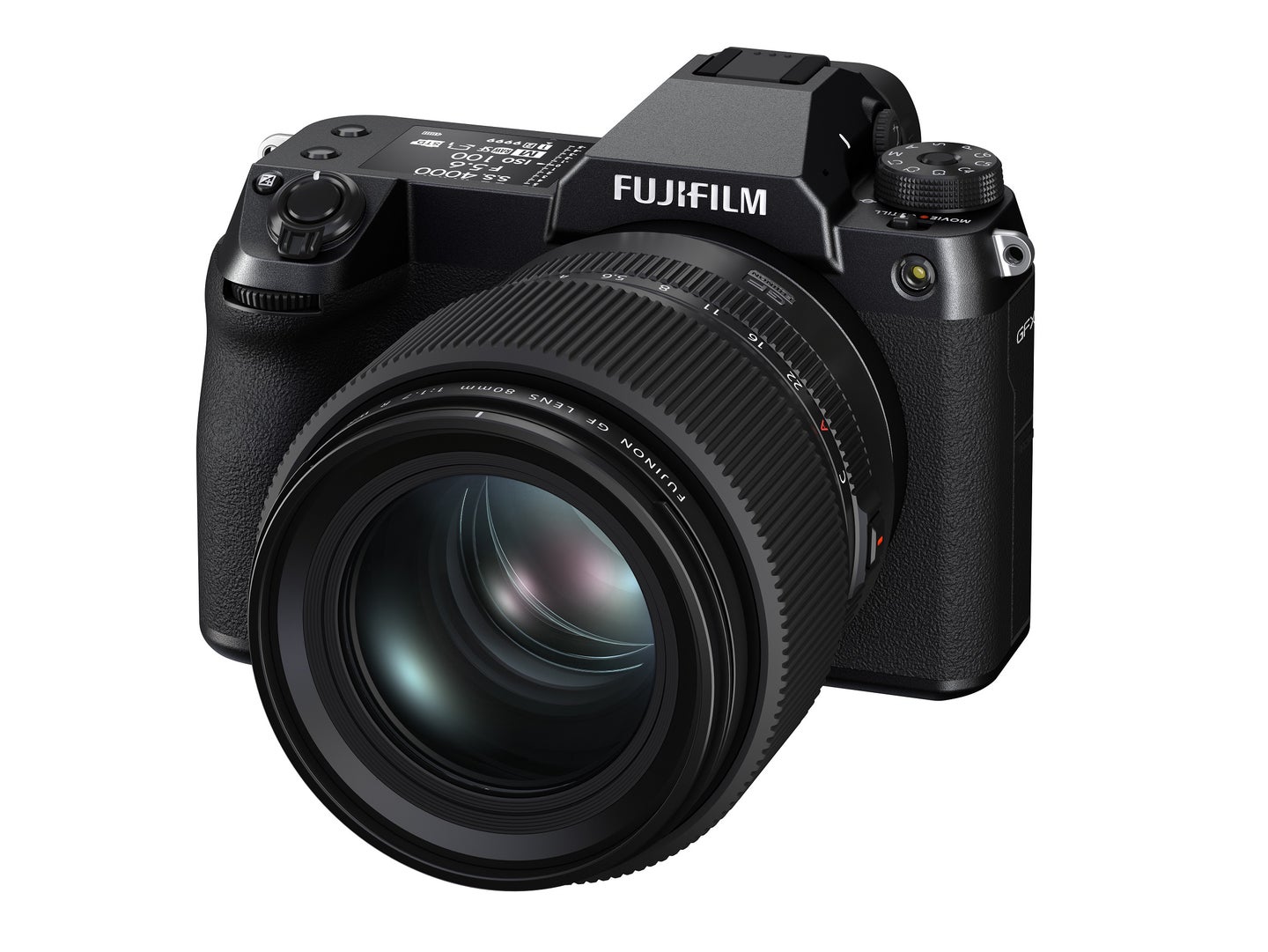Fujifilm packed a large, 100-megapixel sensor into a camera the size of a typical DSLR
The GFX 100S is smaller, lighter, and cheaper than its predecessor.

We may earn revenue from the products available on this page and participate in affiliate programs. Learn more ›
Back in 2019, Fujifilm released its first entry into the 100-megapixel medium format camera space. The GFX 100 was a beastly, $10,000 body with an integrated grip-style body similar to a pro DSLR like Canon’s 1D X Mark III or Nikon’s D6. This week, however, the company took some big steps toward making high-res medium format more accessible with the GFX 100S. It boasts a 44 x 33mm (that’s larger than full-frame) sensor with a 102-megapixel resolution, but the cost has dropped to $6,000—and the camera is actually smaller than some full-frame mirrorless models out there.
The form factor is similar to the GFX 50S, which doesn’t have the integrated grip. That brings the GFX 100S’s weight down to just under two pounds, which is roughly a third of a pound heavier than Canon’s R5 mirrorless camera. From a volume standpoint, the GFX 100S is slightly smaller than Panasonic’s S1R, despite the Fujifilm’s larger sensor.
Technical specs
The 102-megapixel sensor inside the GFX 100S is the same one that you’ll find in the earlier, bulkier GFX 100. It uses Fujifilm’s bigger-than-full-frame G format, which isn’t quite as large as the medium format sensors found in other high-end rigs made by companies like Phase One.
That sensor now sits in an image stabilization system that promises up to 6 stops of shake reduction. Combined with a body that’s much lighter than its chunky older sibling, that should make it simpler to get sharp images when shooting from a tripod. Because the stabilization moves the sensor inside the body, it also enables a high-resolution shooting mode that combines multiple shots captured with the sensor in different positions to create a 400-megapixel image with absurd levels of resolution.
In normal shooting modes, the GFX 100S can capture up to 5 frames per second, recording to a pair of UHS-II SD card slots. It uses the same battery as the X-T4 mirrorless camera, and Fujifilm claims it will get an impressive 460 shots on a single charge—but that will obviously vary depending on how much you use the screen and the shooting modes you choose.
Viewfinder
The original GFX system, which debuted back in 2016, had a modular viewfinder that could flip up depending on how you preferred to hold the camera. In an effort to make the new body smaller, the 3.69-million dot OLED finder is fixed in place. Shooters can choose whether they prefer to optimize the finder for detail by maximizing the resolution or cranking up the refresh rate in order to get smoother motion when composing shots. The 3.2-inch touchscreen on the back has two-axis tilt and a 2.36 million dot resolution, which is nothing out of the ordinary.
Video mode
It’s unlikely many people are buying this camera primarily to shoot video, but Fujifilm has made some improvements to its motion-shooting capability. It can pull down 4K footage at 30 fps and send up to 12-bit raw footage to an external recorder via onboard HDMI. That may seem rather paltry compared to the 8K ambitions of cameras like the Sony Alpha 1 and Canon’s R5, but those are much different cameras. If you want to shoot a lot of video, don’t buy a 100-megapixel medium format camera.
How does it stack up against its competition?
Thanks to the timing and the price, the GFX 100S has already drawn some early comparisons to the Sony Alpha 1, but they’re two very different cameras. The Sony checks in at a substantial 50-megapixels, but its larger emphasis is on speed: It can shoot 30 full-res images per second for up to roughly 150 total frames, which makes it capable in fast action situations like sporting events. With its 5 fps framerate and massive files, the GFX 100S is better-suited for commercial and portrait photographers.
That larger sensor and higher resolution do come in handy for creating a specific look, however. The GFX 100S will have more pronounced depth of field effects, and the super high-resolution allows shooters to utilize the center of the frame and crop later, which takes advantage of the lens’s sharpest area.
Compared to the old GFX 100, the 100S seems much more viable for wedding and other types of portrait photography, which require holding a camera for long periods of time. The 100S is more than a full pound lighter than the 3-pound GFX 100, which is a huge difference when you’re trying not to destroy your wrists and forearms.
GF80mm f/1.7 lens
In addition to its new body, Fujifilm has also announced a new short portrait lens to go with it. The GF80mm f/1.7 has the same field of view as a 63mm lens on a full-frame camera. That fast aperture combined with a 9-blade aperture should create some extremely smooth blur effects in out-of-focus areas. It has 12 elements in nine groups and it weighs roughly 1.7 pounds.
It’s not cheap—you can expect to shell out $2,229 for it when it hits the market, but that’s the way of the high-end lens world. That’s the same price as Canon’s full-frame 50mm f/1.2 RF lens, which doesn’t have to cover as large of a sensor.
Look for both the GF80mm f1.7 and the GFX 100S to start shipping in the next few months.
